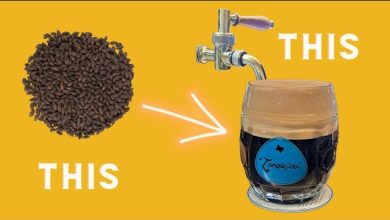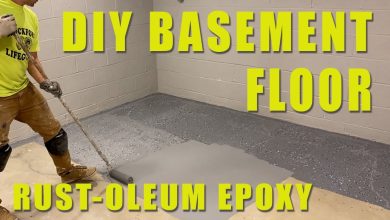Restoring a chair presents special problems. The wooden surfaces are covered with old glue and the joints are loose, making it difficult to create a strong bond. And not only must you reassemble the chair parts, the adhesive you use must fill the voids in the loose joints. We test several readily-available glues for both their strength and gap-filling properties. We also investigate several materials made just for chair repair that claim to secure the joints either by filling the gaps or swelling the wood to fit.
To get a FREE copy of the test results mentioned in the video, visit our store at. And for even more gluing information, pick up a copy on Nick’s book on “Gluing and Clamping” at.
To see all of our videos and SUBSCRIBE for more, see:
Also visit the WORKSHOP COMPANION GENERAL STORE where we offer a wide selection of Nick’s BOOKS and PROJECT PLANS in digital format:
Pick up one of Nick’s books FREE just for visiting!
For our non-English-speaking viewers: Closed captions can be set to any language. Click on “CC” (Closed Captions) at the bottom of the screen to turn them on. Click on the gear (Settings) and a menu appears. Click on “Subtitles/CC” and another menu will appear. Click on “Auto Translate” and a menu of languages will appear. Click on the language you want for the closed captions and you will be returned to the video — closed captions will appear in the language you have chosen. If these captions cover up some of the action, place the cursor over the captions, press and hold the left mouse button, then drag the captions to where you want them on your screen. Release the mouse buttons and they’ll stay there.
Para nuestros espectadores que no hablan inglés: los subtítulos se pueden configurar en cualquier idioma. Haga clic en “CC” (Subtítulos) en la parte inferior de la pantalla para activarlos. Haga clic en el engranaje (Configuración) y aparecerá un menú. Haga clic en “Subtítulos/CC” y aparecerá otro menú. Haga clic en “Traducir automáticamente” y aparecerá un menú de idiomas. Haga clic en el idioma que desea para los subtítulos y volverá al video; los subtítulos aparecerán en el idioma que haya elegido. Si estos subtítulos cubren parte de la acción, coloque el cursor sobre los subtítulos, presione y mantenga presionado el botón izquierdo del mouse, luego arrastre los subtítulos a donde quiera que estén en su pantalla. Suelte los botones del mouse y permanecerán allí.
Our Music is Licensed through Epidemic Sounds –
And thank you so much for your time and interest!
Video Credits: https://www.youtube.com/watch?v=mO03Ykqf2_U
Disclaimer: This video is posted for educational purposes only. We do not intend to violate any copyright or intellectual property rights. All rights remain with their respective owners. If you have any concerns or issues regarding this content, please contact us Here.
Thank you for your understanding and support.










Hey, maybe you should try E6000 glue on this test. I've found this glue to be amazingly strong, but it does take a long time to reach maximum strength. I think it can take up to 72 hours for a thick application. I've used it to repair all kinds of things made of metal, wood, fabric and plastic. None of the repairs I have made have failed yet. I used it to make a seam on the bottom of some pants I cut off (I hate sewing) and they have survived rough use and at least four washings so far with no signs of the glue failing. Did I mention it remains flexible? Well, of course it has to in that fabric application, but I didn't use a solid stream, I just tacked the fabric to itself every inch or so.
Hi Nick, I just found your channel today and love it! Your test had an oops in it though, The Epoxy and Resorcinol were done with your scale set to Lb the rest were Kg. It didn't change your result because the adhesion vs. cohesion is more important, which I just learned! Thanks for the channel you are doing great work teaching people like me 🙂
I wonder how much better some of those glues would perform when clamped. I know the Gorilla Glue does much better when clamped, and I suspect the wood glues would be similar.
The Elmer's pro bond glue might not be good for chair repair but I would still suggest buying a bottle. It works great for any kindof porous ceramic/porcelain and glass. So anytime one of the wife's little decorations or knickknacks breaks I've used it and been very surprised and satisfied with the results.
Wow! Very informative video. Wish I would’ve seen this years ago, considering how many chairs have just went in the trash as unfixable. 🤦🏻♀️
I wonder how a combination of the rip strips with the last two would perform, maybe even the best 5 0f the first test?
Resorcinol – I am surprised that it is still around. I remember using it in the 1960's while helping my father making several projects. But I have not seen it available for several decades. Maybe I'm not shopping in the correct places …
In the Epoxy and the Resorcinol tests, the scale was on LB, and the rest of the tests it was on KG…. 😉
I love your videos! However, I have a different perspective to offer on chair joints. I would rather NOT have the glue be stronger than the wood itself. I've seen too many breaks where the wood splinters instead of failing at the joint. This makes repairs much more difficult. I prefer hot hide glue for this reason. Also, previous hide glue is easier to remove when you need to clean and reglue joints. Although, I will agree that hide glue doesn't fill gaps very well.
Thanks again for the fantastic content!
Why did you not clamp the joints? Nearly all glues have instructions that recommend clamping. I think this definitely put the Gorilla glue at a disadvantage, and it probably hurt the performance of other glues.